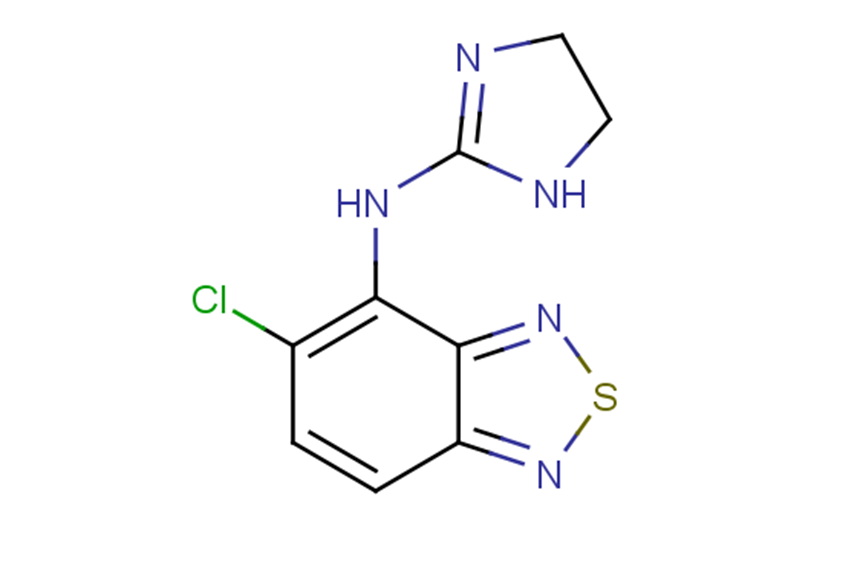
Tizanidine
CAS No. 51322-75-9
Tizanidine( —— )
Catalog No. M21987 CAS No. 51322-75-9
Tizanidine is an α2-adrenergic receptor agonist and inhibits neurotransmitter release from CNS noradrenergic neurons.
Purity : >98% (HPLC)
 COA
COA
 Datasheet
Datasheet
 HNMR
HNMR
 HPLC
HPLC
 MSDS
MSDS
 Handing Instructions
Handing Instructions
| Size | Price / USD | Stock | Quantity |
| 5MG | 33 | In Stock |


|
| 10MG | 46 | In Stock |


|
| 25MG | 73 | In Stock |


|
| 50MG | 105 | In Stock |


|
| 100MG | 156 | In Stock |


|
| 500MG | 401 | In Stock |


|
| 1G | Get Quote | In Stock |


|
Biological Information
-
Product NameTizanidine
-
NoteResearch use only, not for human use.
-
Brief DescriptionTizanidine is an α2-adrenergic receptor agonist and inhibits neurotransmitter release from CNS noradrenergic neurons.
-
DescriptionTizanidine is an α2-adrenergic receptor agonist and inhibits neurotransmitter release from CNS noradrenergic neurons.
-
In Vitro——
-
In Vivo——
-
Synonyms——
-
PathwayAngiogenesis
-
TargetAdrenergic Receptor
-
Recptorα2-adrenergic
-
Research AreaOthers
-
IndicationUnilateral Inguinal Hernia
Chemical Information
-
CAS Number51322-75-9
-
Formula Weight253.71
-
Molecular FormulaC9H8ClN5S
-
Purity>98% (HPLC)
-
SolubilityIn Vitro:?DMSO : 22.22 mg/mL (87.58 mM)
-
SMILESClc1ccc2nsnc2c1NC1=NCCN1
-
Chemical Name——
Shipping & Storage Information
-
Storage(-20℃)
-
ShippingWith Ice Pack
-
Stability≥ 2 years
Reference
1.Kamen L, et al. A practical overview of tizanidine use for spasticity secondary to multiple sclerosis, stroke, and spinal cord injury. Curr Med Res Opin. 2008 Feb;24(2):425-39.
molnova catalog



related products
-
1-(2-Pyridyl)piperaz...
1-(2-Pyridyl)piperazine is a selective α2-adrenoceptor antagonists. 1-(2-Pyridyl)piperazine shows sympatholytic activity. 1-(2-Pyridyl)piperazine is also a metabolite of Azaperone.
-
SR59230A
MDMA (20 mg/kg) produces a slowly developing hyperthermia, reaching a maximum increase of 1.8°C at 130 min post injection.
-
Phentolamine
Phentolamine mesylate is an alpha-1 and alpha-2 selective adrenergic receptor antagonist.



 Cart
Cart
 sales@molnova.com
sales@molnova.com


